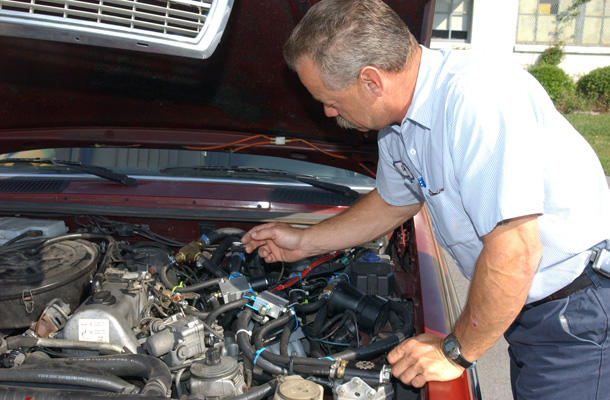You should do three things to keep your cooling system in good shape:
- Check for leaks.
- Replace worn hoses before they split.
- Flush the system and change the coolant at least once a year or every 20,000 miles, whichever comes first, unless your vehicle has the new extended-life coolant that lasts for five years.
Deciding if You're Up for the Job
There are pros and cons to flushing your cooling system and changing your coolant yourself:
PRO: The difference in cost is tremendous: If you do it yourself, all you need to buy is a jug of coolant, which sells for less than $10. A professional job can cost as much as five times more. Remember, not only does your service station expect to make a profit on the coolant (they bought it and stocked it,didn't they?), but they also charge for labor and coolant recycling.
CON: In the "good old days," flushing the system and changing the coolant yourself was easy. You just hooked a garden hose to a little tee in the heater hose, opened the radiator cap, and let the coolant and water flow through the systemand onto the ground until the system was clean. However, times have changed.
Coolant is highly toxic, especially to children and small animals, who love its sweet taste. If a small child, dog, or cat drinks the stuff, it will probably die. Because of the need to keep the used coolant out of the environment, flushing and changing coolant has become more complicated. Service stations in most states must either meet stringent disposal requirements or purchase a machine that recycles the coolant by cleaning the coolant as it flows out of the vehicle, adding a shot of the chemicals that have been depleted by use, and putting the coolant back into your system. The good news is that this recycledcoolant is every bit as good as the stuff you buy at the auto supply store.
Although a flushing "tee" may be installed in one of the heater hoses on your vehicle, please don't try to use it yourself without following the instructions so that you can do the job and recycle the used coolant safely.
From Auto Repair for Dummies, copyright © 2009 by Wiley Publishing, Inc., Indianapolis, Indiana. Used by arrangement with John Wiley & Sons, Inc.










